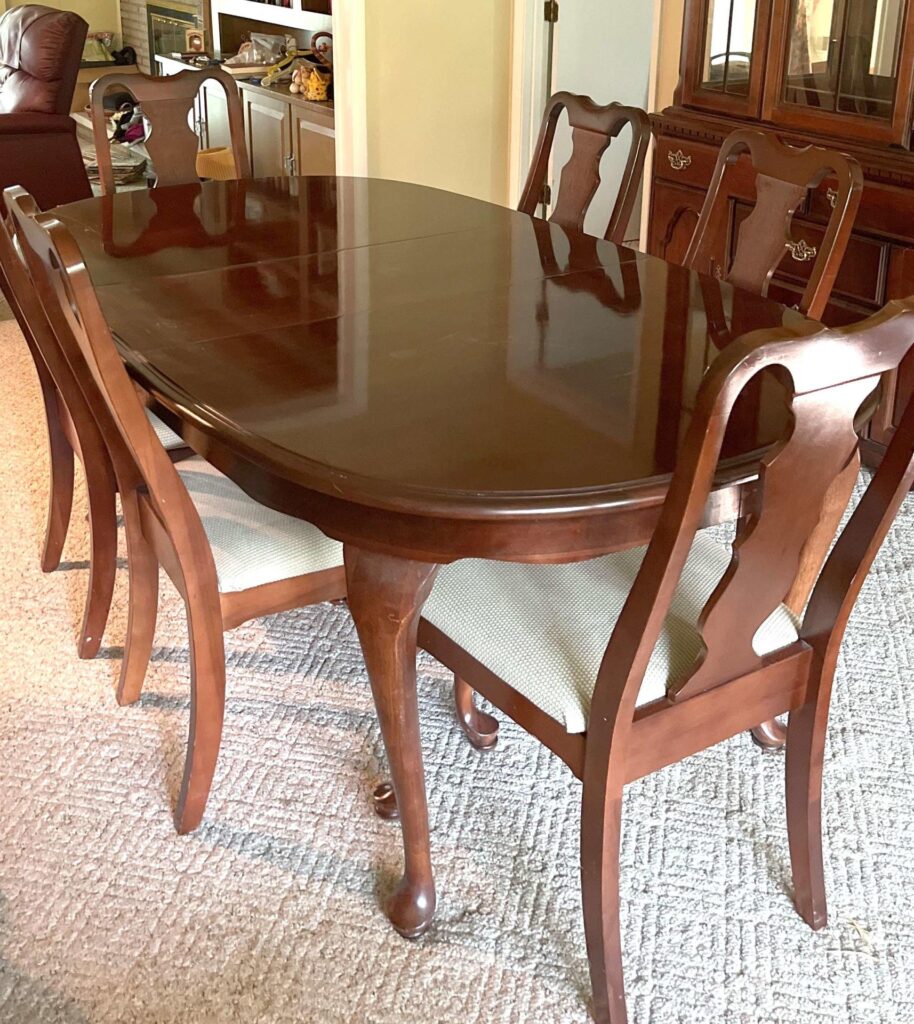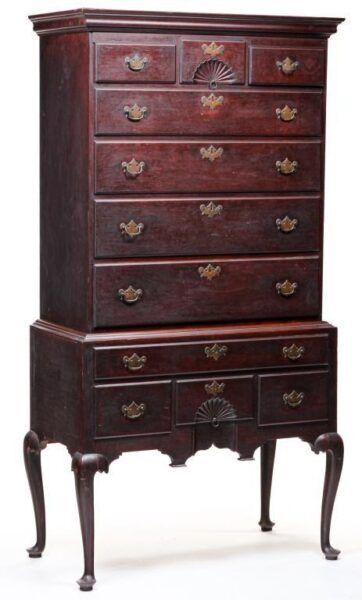#S.O.S #Surplus #Stuff #Amy #Moyer #Brown #Furniture #WorthPoint
Do you have a formal (brown) dining room set, a pair of (brown) side tables flanking a chintz couch in your living room, or a giant (brown) hutch keeping all your Lladró and Hummel figurines safe? Read on to learn what to do with all your S.O.S. (Surplus Old Stuff): Brown Furniture.
Bygone Era of Brown Furniture
What is “brown furniture?” Brown furniture is, well, brown, referring to the dark color of various woods used to make items, such as mahogany, walnut, and oak. In addition, it comprises many antique furniture styles—from Chippendale to Hepplewhite, from simple to more elaborate, from original antique to 20th-century reproduction. The term typically calls to mind the heavier, well-crafted solid wood traditional furniture made before sleeker options arrived in the mid-20th century. Think cabriole legs and ball-and-claw feet.
What brown furniture is not is fashionable in any way in today’s homes, where everyone wants more streamlined, modern designs from the mid-century modern to run-of-the-mill IKEA. Sure, some furniture styles that come in brown hues are still desirable these days, such as art nouveau, art deco, and mission styles, but these furniture trends generally don’t get lumped into the dreaded S.O.S. (Surplus Old Stuff): Brown Furniture category.

Another way to identify brown furniture is by what surrounds it. Is that dining room set atop an Oriental rug in a room clad in lurid Victorian floral wallpaper? Is there a china cabinet in the corner chockablock with S.O.S. (Surplus Old Stuff) china, crystal, Lladró figurines, and porcelain Hummel children? Then that dining room set is S.O.S. (Surplus Old Stuff): Brown Furniture.
How about in the living room and hallway? Are there brown end tables bookending a chintz couch, ready to serve as a surface for a cup of tea in one of those china tea cups? Do they also each perhaps have a porcelain lamp with a fringed lampshade, along with a Wedgwood Jasperware pin dish? Those tables are also likely S.O.S. (Surplus Old Stuff): Brown Furniture.
Tea with the Queen
The problem with a lot of brown furniture is that it doesn’t serve the purpose it once had. Folks don’t hold many formal dinners in the dining room or host the Queen (or King) for tea these days. Entertaining and eating are both much less formal in today’s hectic world, where many are lucky to grab a frozen waffle for breakfast or succumb to the fast food drive-thru after a full day of work. Brown furniture is simply outmoded in today’s world.
However, this furniture category’s inherent craftsmanship and durability keep it relevant. Whether a genuine antique or a 20th-century reproduction, most brown furniture is still in homes today because it lasts. Unlike an IKEA dresser, the bottom drawer doesn’t break after precisely six months, necessitating another trip to the big box store to get a new one along with some Swedish meatballs. And unlike white particleboard furniture, which has been popular since the 1980s, brown furniture does not discolor over time into a nasty yellowish hue. Instead, this furniture is a bit like your warmest, most comfortable coat that you’d love to wear in the wintertime but, in the name of fashion, decide to wear the year’s trendiest (and most flimsy) jacket instead, shivering all the way.
Safe to Save?
Just as I’d recommend you hold on to that warm coat, I recommend you hold on to your antique brown furniture. Every year for the past ten or fifteen years, designers have asked the question: Is brown furniture making a comeback? One day, it will. For now, it very mildly ebbs and flows in and out of most decorators’ toolboxes.
In any event, pay attention to the items in your home and make a distinction between the true antique brown furniture and the 20th-century reproductions. If you have a dining room set that your mother or grandmother bought from a local furniture store in the 1940s or 1950s, those items likely have little value, and you can safely donate them. However, if you have a chest of drawers gathering dust in your attic with some foggy family history of a relative bringing it over on a boat from the old country, hold on to that piece until you’re sure of its origin and value.
You can still use most S.O.S. (Surplus Old Stuff): Brown Furniture, and you can be sure it will hold up better than most furniture on the market today, outmoded or not!
Amy Moyer is the proprietor of Antmuffin: Art, Antiques & Collectibles. She holds a B.A. in Visual Art from Brown University and lives in Boston.
WorthPoint—Discover. Value. Preserve.




